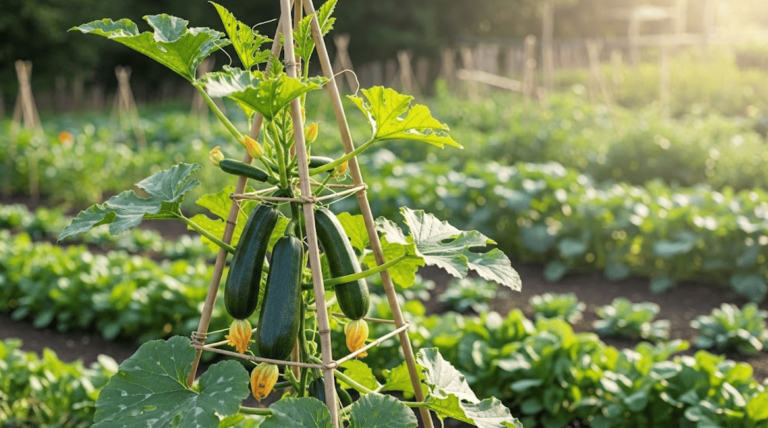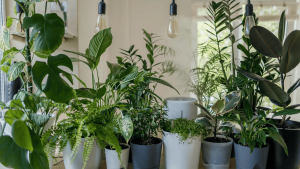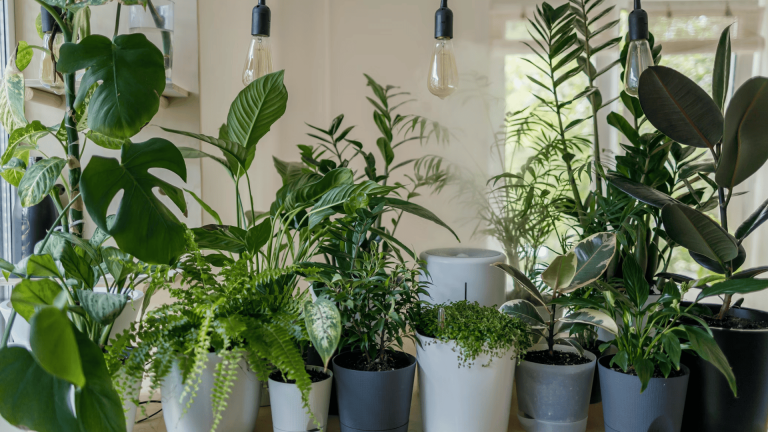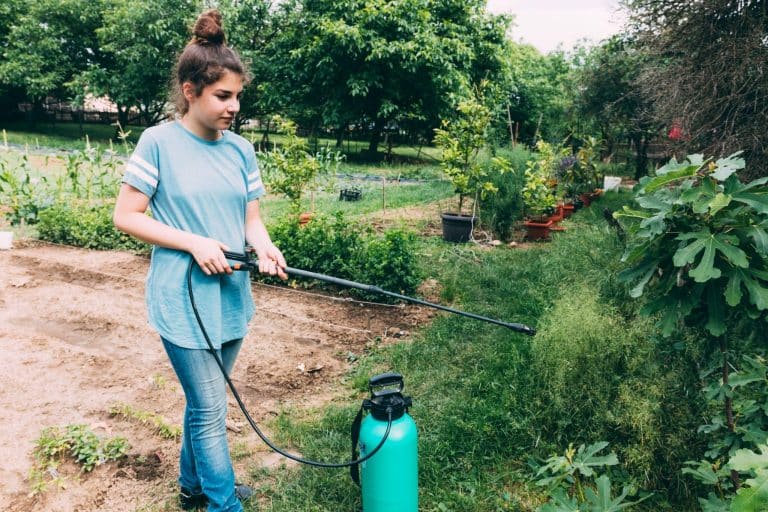Are you tired of Zucchini plants overtaking your entire garden bed? Many space-conscious gardeners assume that Zucchini needs a trellis.
These prolific plants can sprawl across the ground, creating large, leafy patches in traditional gardens. However, more gardeners are turning to vertical growing methods to maximize limited space.
Trellises offer an innovative solution for managing space while growing these sprawling plants. In this guide, I’ll show you whether a Zucchini trellis is really necessary and explain the benefits of vertical growing.
You’ll learn space-saving tricks that can completely change how you grow Zucchini, making your gardening efforts more efficient. Ready to upgrade your zucchini-growing game? Let’s plunge in!
Do Zucchini Need a Trellis?
Zucchini doesn’t necessarily need a trellis, but using one can change your garden. While Zucchini plants naturally spread out over the ground, trellising encourages upward growth, saving valuable space.
Without support, Zucchini can sprawl 3–4 feet in all directions, which is fine if you’ve got the room. However, in urban or smaller gardens, space is often limited.
Bush Zucchini varieties are more compact, yet still require space. Even these can spread 2–3 feet wide when fully grown.
Trellises allow Zucchini to grow vertically, improving air circulation and making harvesting much easier. While not mandatory, a trellis is a game-changer for achieving better yields and cleaner gardens.
Types of Trellises for Zucchini
Here are five popular trellis options that work perfectly for Zucchini plants. You can select the one that suits your space and budget.
| Trellis Type | Description | Best For |
|---|---|---|
| A-Frame Trellis | Two angled panels form a triangle, supporting heavy fruits and multiple plants. | Medium gardens |
| Vertical Wire Trellis | Wire mesh on posts allows vines to grow through, offering great airflow. | Long garden beds |
| Tomato Cage System | Circular wire cages provide simple, 360-degree support for bush varieties. | Small gardens and spaces |
| Bamboo Tepee Structure | Bamboo poles are tied together at the top, adjustable, and eco-friendly. | Decorative gardens |
| Wall-Mounted Trellis | Attached to walls/fences, maximizing vertical space. Requires strong mounting. | Urban patios |
Each trellis type offers unique benefits that cater to different growing needs. Choose the one that best suits your garden size and the variety of Zucchini you plan to grow.
Benefits of Growing Zucchini Vertically on a Trellis
I’ll show you the amazing advantages of growing vertical Zucchini in your garden. You’ll learn how trellises save space, boost plant health, and make harvesting much easier.
1. Space-Saving Benefits
Vertical Zucchini growing saves valuable ground space, allowing other plants to grow. Instead of spreading 4-6 feet, a trellised plant climbs upward.
This space-efficient method is perfect for smaller gardens or urban spaces. By maximizing vertical space, you can grow more varieties in the same area and keep pathways clear for easy maintenance.
2. Improved Air Circulation
Trellising Zucchini improves air circulation around the leaves and stems, which helps prevent fungal diseases like powdery mildew.
Better airflow allows moisture to dry more quickly after rain or watering, reducing the likelihood of disease. Healthy plants benefit from increased air movement, which improves pollination and overall growth. It also helps plants stay stronger throughout the season.
3. Easier Harvesting
With vertical growing, Zucchini is much easier to harvest. Fruits hang at eye level, so there’s no need to crouch or crawl under sprawling plants.
It’s simple to spot ripe Zucchinis without lifting heavy leaves. This makes picking fast and convenient, with no bending over or kneeling involved. You’ll enjoy easier harvesting without back strain.
4. Reduced Pest Issues
Trellising Zucchini promotes fruits off the ground, keeping them away from pests like slugs and snails. By reducing soil contact, it also minimizes the risk of soil-borne diseases.
Better drainage around vertical plants helps prevent root rot and moisture-related issues. Fruits stay cleaner, with fewer blemishes, and you’ll spend less time managing pest damage and plant diseases.
How to Set Up a Trellis for Zucchini
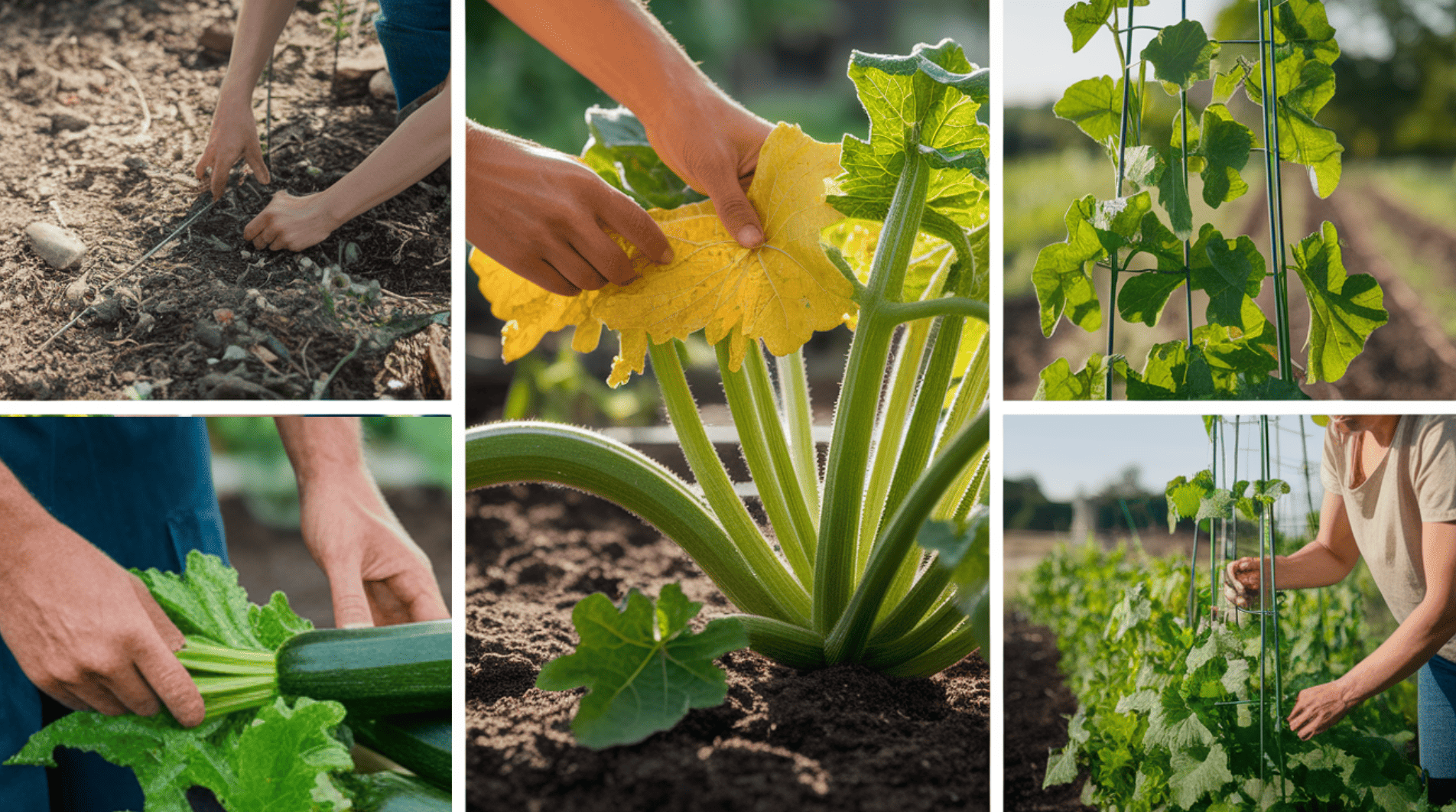
To train Zucchini vines onto a trellis successfully, follow these easy steps to promote healthy growth and improve harvesting.
- Prepare the Growing Area: Clear space around the Zucchini to allow it to grow upward. Ensure it receives ample sunlight throughout the day.
- Prepare the Zucchini Plant: Remove any damaged or yellow leaves before positioning it near the trellis to encourage healthy growth.
- Place the Zucchini Near the Trellis: Position the Zucchini plant close to the trellis so the vines can start climbing right away. Ensure it is stable and supported.
- Tie the Vines to the Trellis: Use soft garden ties or twine to gently secure the Zucchini vines to the trellis, ensuring the ties aren’t too tight to avoid damage.
- Prune and Direct the Growth: Regularly prune side shoots and guide the vines upwards along the trellis to maintain vertical growth.
By following these steps, your Zucchini will grow strong, healthy, and well-supported on the trellis. Consistent care ensures flourishing plants and a great harvest.
Best Zucchini Varieties for Trellis Growing
If you’re looking for Zucchini varieties perfect for growing on a trellis, these five options stand out. They’re all easy to train and offer great benefits for vertical gardening.
| Variety | Key Features | Why It’s Great for Trellis Growing |
|---|---|---|
| Incredible Escalator | Grows 6-7 feet tall, with rich green fruits and a nutty flavor. | True climber, high yield, easy harvesting at height. |
| Tromboncino | Long, curvy fruits, 15-foot vines, pest-resistant. | Vigorous climber, easy to train, pest-resistant. |
| Black Forest | Grows 6 feet tall, dark green cylinders. | Strong vertical growth, reliable crop. |
| Emerald Delight | Compact, disease-resistant, and matures in 50-55 days. | Vertical growth, space-efficient, and powdery mildew-resistant. |
| Black Beauty | Thin skins, high yield, matures in 50-55 days. | Prolific, adapts well to supports, and quick harvest. |
These varieties help save space, improve disease resistance, and boost harvests in small gardens. Give them a try and see which one works best for your growing space!
Common Challenges with Growing Zucchini on a Trellis
Trellising Zucchini offers several advantages, but it’s essential to be aware of a few challenges. Here are some considerations when growing Zucchini vertically:
- Limited Space for Large Varieties: Some Zucchini varieties can outgrow smaller trellises, so it’s essential to choose the right variety.
- Frequent Pruning Needed: Zucchini vines grow quickly and require regular pruning to prevent tangling and overcrowding.
- Risk of Vines Breaking: The weight of heavy fruits can strain the vines, so make sure your trellis is sturdy enough to handle them.
- Trellis Setup Costs: The initial cost of building a trellis might be a factor, especially if you need to purchase materials.
By being mindful of these challenges, you can enjoy the benefits of trellis-grown Zucchini with fewer issues.
Wrapping It Up
Zucchini can flourish both on the ground and climb up trellises. You’ve learned that while trellises aren’t required, they offer amazing benefits for modern gardeners. Vertical growing saves space, improves air circulation, and makes harvesting much easier.
Trellises also keep your plants healthier, produce cleaner fruits, and reduce pest issues. Try both ground and vertical methods to see which suits your garden best.
Ground growing is excellent for larger spaces, while trellises are perfect for compact urban gardens. Experiment with various trellis types and Zucchini varieties to find the best combination for your needs.
Your garden will be more organized and productive with vertical growing. Ready to start your first Zucchini trellis? Share your experiences in the comments below!


